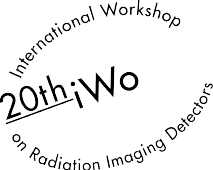Speaker
Description
It is advantageous to combine information about geometry and the inner structure of historical artifacts with information about the elemental composition of decorative layers (polychromy), typically covering historical wooden sculptures. X-ray computed tomography describing artifact structure is quite common and easy. Standard X-ray fluorescence (XRF) analysis of decorative layers is typically done for several selected spots of the artifact’s surface utilizing single pad detector. XRF imaging fully describing the surface’s elemental composition is commonly done for flat objects, while time consuming XRF tomography is applied to relatively small objects. It will be shown in this work that an effective fusion combination of XRF imaging and X-ray tomography describing the whole object can be realized even when using a limited number of XRF images.
Sculpture polychromy is typically composed from several layers as for instance basic white color layer containing zinc or led which is silvered or golden. Metal foil is usually covered by several color layers which can contain pigments based on other metals like iron, mercury, copper etc. The polychromy is relatively thin in comparison with sculpture dimensions, therefore XRF signal can be expected from the sculpture surface only as it is extremely low probability that XRF photons will transmit through the investigated body.
The gamma/XRF camera (XRF camera hereafter) used in this work is employed for XRF imaging [1] - XRF photons are detected by the XRF camera pixelated detector through a pinhole collimator. XRF camera is equipped with two stacked Timepix detectors [2]. Detectors are operated in counting or time-over-threshold mode (ToT), which enables measuring the energy of each incident photon utilizing single event analysis. Front detector of the XRF camera used has a 300 um thick silicon sensor, and the back detector has a 1 mm thick CdTe sensor. XRF images are projected through pinhole with 100 um diameter. The XRF camera communicates via a USB 2.0 interface allowing frame rates up to 30 fps.
The Twinned Orthogonal Adjustable Tomograph (TORATOM) was used for CT and XRF data acquisition. TORATOM consists of two independent X-ray imaging lines in an orthogonal arrangement, with a shared rotational stage. TORATOM is equipped with 160 kV and 240 kV tubes (X-RAY WorX GmbH). CT data are recorded utilizing 160 kV tube and flat panel detector Perkin Elmer (400x400mm, 0.2 mm pixel pitch). XRF photons are induced by the 240 kV tube.
Mapping of the XRF data onto surface of the topographically reconstruction volume is done as follows [3]. The reconstructed volume (3D matrix) is binarized, i.e. a value of 1 is written into voxels which have a value higher than the given threshold (corresponding to air) and a value of 0 is written into voxels with a value lower than the same threshold. The coordination system of the volume is rotated to have vertical slices parallel with the XRF camera detector. The XRF image is multiplied with vertical slices in successive steps from the slice nearest to the XRF camera up to the furthest slice. When the first voxel with a value of 1 is met, the value of the related pixel of the XRF image is written into this voxel. The same pixel of the XRF image is then set to zero. Therefore, such an XRF pixel is not written into other voxels laying behind the first detected material. Obviously, the XRF image has to be gradually enlarged due to the subsequently increasing distance between the vertical slices and the camera. An example of the XRF data mapped onto surface of the reconstructed baroque Pieta is depicted in the figure bellow. XRF image coded in the RGB representation: R 3-7 keV, G 8-16keV, B 18-28 keV. The mixture of materials is expressed by the resultant color.
It was proven that the fusion of XRF imaging and CT helps to identify the distribution of the various elements and relationships between the surface’s material composition and the geometry of the reconstructed volume. It is relatively easy to implement descibed method of the XRF mapping into surface layer of the CT volume. Analysis of the Middle age wooden sculpture from the National Gallery in Prague will be presented as example.
REFERENCES
[1] Zemlicka, J., et al., Energy and position sensitive pixel detector Timepix for X-ray fluorescence imaging, Nucl. Instrum. Meth. A 607 (2009) 202.
[2] Llopart X. et al., Timepix, a 56k programmable pixel readout chip for arrival time, energy and/or photon counting measurements, Nucl. Instrum. Meth. A 581 (2007) 485.
[3] D. Vavrik, J. Jakubek, J. Lauterkranc, I. Kumpova, M. Vopalensky, J. Zemlicka, Multimodal analysis of cultural heritage artefacts utilizing computed tomography and x-ray fluorescence imaging, IEEE Nuclear Science Symposium Conference Record, 2016, DOI: 10.1109/NSSMIC.2016.8069960




